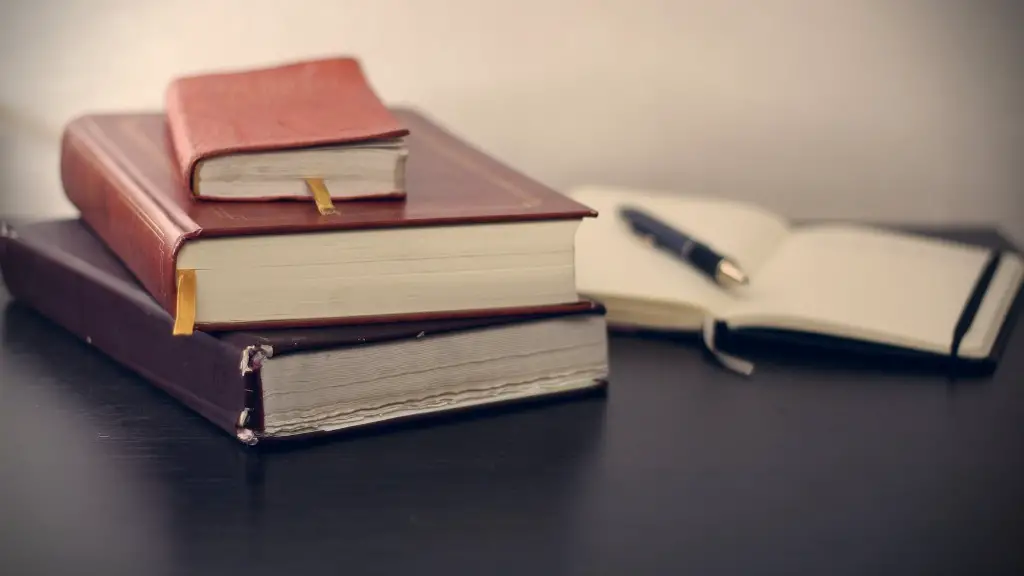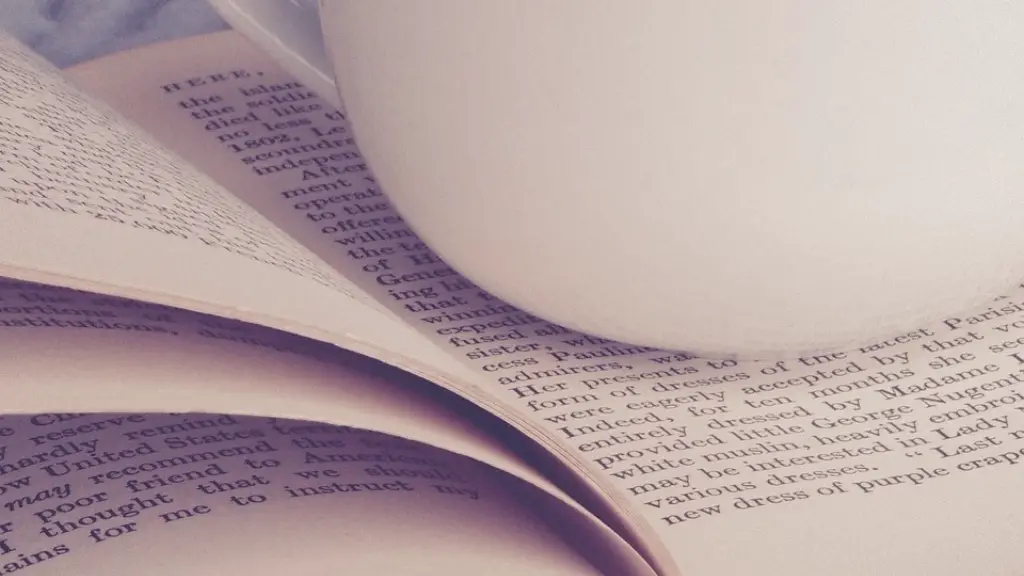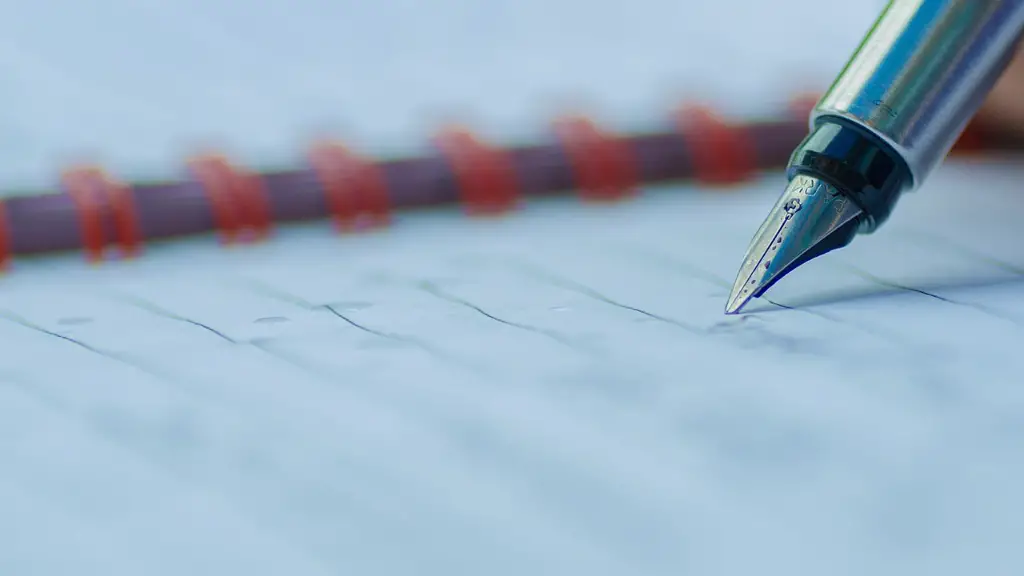Counting Syllables in Poetry
Learning how to count syllables in poetry can be an incredibly useful and powerful tool for poets, particularly when writing complex forms. Syllable counting can help poets to understand the rhythm of their poem, focus their written word and overall construct a better piece of poetry.
The process of counting syllables in poetry involves breaking down the text on a syllabic level, and counting the number of syllables in each word or phrase. This process can be time consuming, but with practice and patience, poets can become more fluent at the task.
When counting syllables, poets need to focus their attention on the pronunciation of certain letters and words, rather than the meaning. Each vowel in a word usually holds its own syllable, unless the vowel is a double-vowel, such as in ‘team’. It is worth mentioning that throughout speech, double-vowels are often pronounced differently, as opposed to a single vowel, and should be considered when counting syllables.
Experts advise that when first learning to count syllables, poets should start by reading the poem out loud to gain a better sense of the beat and overall rhythm of their poem. It is also advised that they should read the poem in its entirety a few times to gain an overall understanding of the flow.
One way to practice counting syllables is to break down each individual syllable of the poem. One way to do this is to use the syllabary – a visual representation of each syllable, used in the formation of written words – to assist in the counting process. Additionally, experts recommend that poets should also practice counting syllables in larger chunks. This helps poets to gain a better understanding of the flow of their poem and how their lines fit into the bigger picture.
Overall, counting syllables in poetry can be a time consuming process, and takes practice and patience to master. However, with the correct techniques and resources, counting syllables can be a useful tool for poets to get their words flowing and construct a better poem.
Writing A Poem At The Right Tempo
Understanding how to count syllables in poetry puts poets in a better position to write a poem at the correct tempo. Depending on the style of poem, different syllable counts create a different flow. For example, an iterative poem often contains a consistent syllable count for each line and stanza.
A good way to determine the tempo of a poem is to look for a consistent pattern amongst the lines and stanzas. Often, when writing a poem, poets may find themselves counting the syllables and adjusting the words to the desired syllable count.
It is worth noting that the syllable count doesn’t always have to be the same for each line in a poem. In fact, slight variations in the syllable count can work to bring greater emphasis to certain parts of a poem, while also providing a rhythm to the piece. By counting the syllables and adjusting the rhythm of each line, poets can take control of their poem, really emphasising its content.
Learning how to count syllables in poetry has been suggested to be a useful tool to poets in the past. Counting syllables can help poets to better understand their poem’s tempo, as well as enabling them to take control of the flow of each line and stanza. Furthermore, utilizing the syllabary as a type of syllable counting can help poets to better understand the process, particularly if they are beginning to learn.
Syllable Count and Grammar
When counting syllables in poetry, it is important to consider the significance of syllable count on the poem’s grammar. For example, in oriental-inspired poetry, poets often have to adhere to the usage of Grammar-言語-grammaire, which requires specific syllable counts for certain words and phrases. By ensuring that their syllable count fits the poem’s grammar, poets can create a coherent piece that adheres to a consistent structure.
Another factor to consider when counting syllables in poetry is how the syllable count affects the tone of a poem. For example, if a poet creates a poem with a consistent syllable count, the stanzas become much more uniform, resonating a particular tone of consistency and discipline throughout the poem. On the other hand, if there is a change in the syllable count per line, a diverse tone and energy may be created.
The syllable count of a poem can also suggest a certain speed, tone and rhythm to readers. Poets often construct their poems in a way that is intended to be read or recited out loud; by counting the syllables and adapting the piece accordingly, they can create a poem that scribes an appropriate speed, tone and rhythm when reading.
In conclusion, syllable count can be a powerful tool to poets when writing a poem, as it enables them to evoke certain emotions and tones through their phrases. Properly counting syllables can assist poets in ensuring that their poem adheres to the right structure, tone and speed.
Using Syllable Count To Your Advantage, As A Poet
Once poets understand the basics of counting syllables and how to utilize the syllabary, there are various ways in which they can incorporate syllable counting into their poem-writing process.
Making use of syllables as a tool for structure is a great way for poets to bring structure and discipline to their work. By counting the syllables of their poems, poets can ensure a consistent pattern across the piece. Additionally, poets can combine syllable counting with other structural tools, such as writing with reverse-rhymes, cross-rhymes,or alliteration, to create an even more structured and framed poem.
Another way that poets can utilize the syllable count to their advantage is by using it to add emphasis or rhythm to certain lines or phrases. Written poetry has no accompaniment other than words, thus poets must construct their poem in a way that indicates the tone and rhythm meant to be read or recited. By paying close attention to the timing of each syllable, poets can convey a sense of emphasis or rhythm to their work.
Poets can also use syllabl counting when transitioning from one part of a poem to the next. Once poets have created the syllable count for the first part of their poem, they can adjusting the syllable count of the following stanza to signify a change in tone, energy or emotion.
Overall, syllable counting for poetry is a crucial but often overlooked skill for poets to master. When utilized correctly, syllable counting can have a hugely positive effect upon the work of a poet, as it enables them to create a poem with a strong foundation, as well as focus emphasis on certain lines.
Common Mistakes To Avoid When Counting Syllables
When counting syllables in poetry, it is important to avoid common mistakes. One of the most frequent errors when it comes to syllable counting is omitting double-vowels, or pronouncing them as single syllables.
Another major mistake that is often made is omitting words that have a silent syllable. For example, words such as ‘combine’ or ‘autumn’ may each have two syllables, even though they only have one vowel. It is important to remember that regardless of their spelling, these words still have two syllables and should be included when counting Roman syllables in a poem.
When it comes to Roman phrases or words, it is important to familiarize oneself with them so as to pronounce them accurately. This is especially important when dealing with Latin-based words and phrases, in which syllable accentuation often decides the number of syllables.
Additionally, it is important for poets to take note of the location of the syllables. Syllables located at the beginning of a word or phrase are often accented more strongly than those located at the end.
Finally, it is worth noting that accents can be used when counting syllables. When English is spoken with an accent, some syllables can be erroneously omitted – it is important to consider this when counting syllables and to ensure that the accent of English is taken into account when pronouncing words as they are written.
In conclusion, if poets pay close attention to their words and the way they are pronounced and written, they will be able to accurately count syllables, which can then be used to great effect within the poet’s work.





